The Inveresk Precinct in Launceston is largely comprised of the repurposed Tasmanian Railways Workshops. Most of the rail lines and other railway infrastructure has now gone, but many of the buildings remain and have been converted into other uses. The University of Tasmania occupies a large portion of the site, but so do a whole bunch of other creative industries and small businesses. The two of interest to the kids and I were the Launceston Tramway Museum and the Queen Victoria Museum and Gallery (QVMAG) – Museum component.
The Launceston Tramway Museum
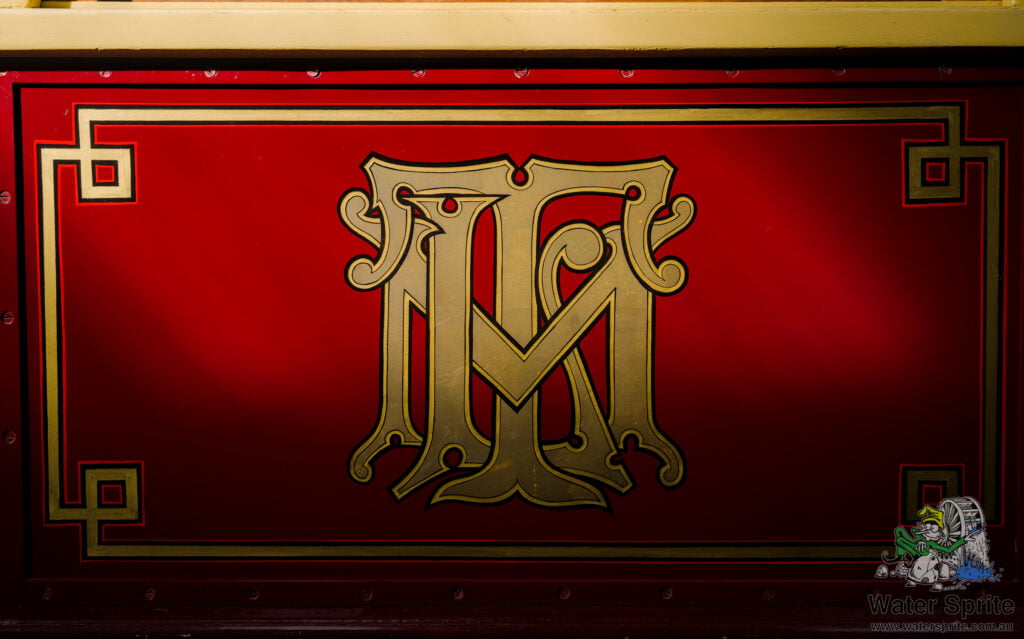
Sony A7Riv with Sony FE 24-70mm F2.8 GM II lens @ 39mm. 1/125s, f/5.0, 100 ISO.
History
Launceston ran a tram network from 1911 until the final tram ran in December 1952. During that time, 29 trams were constructed and used on the network – the last one (number 29) entering service in 1932. Approximately half the trams were constructed in the workshops now (partially) occupied by the tramway museum.
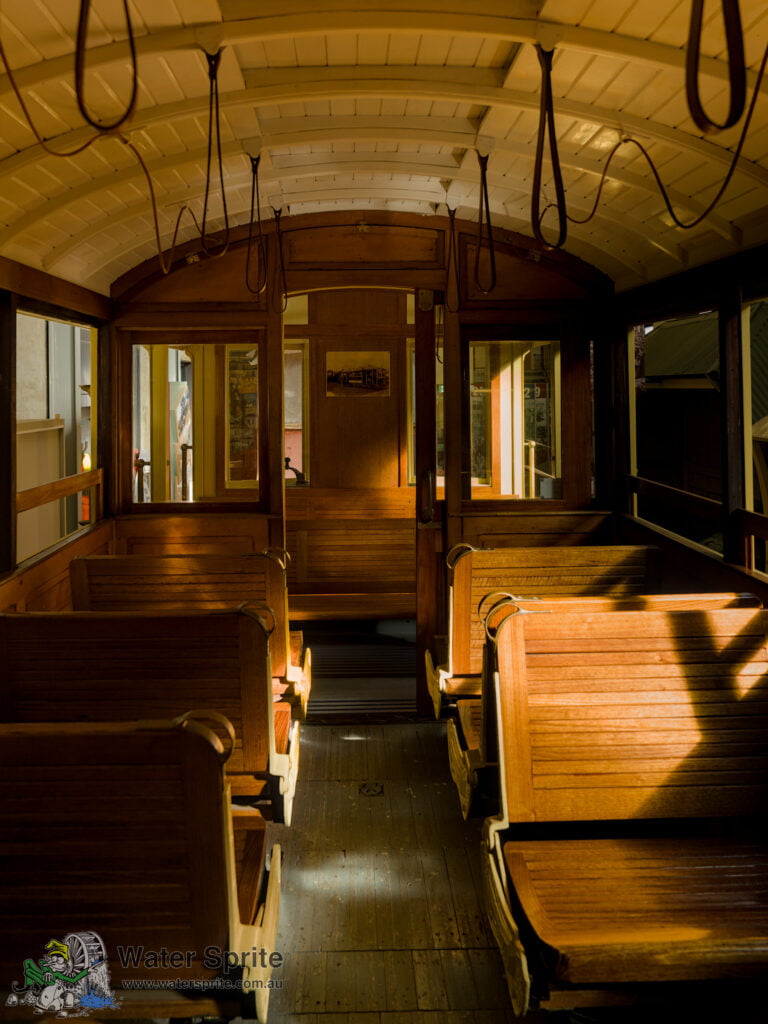
Sony A7Riv with Sony FE 24-70mm F2.8 GM II lens @ 24mm. 1/30s, f/5.0, 160 ISO.
When the tram service was wound up, the tracks were lifted, the pantograph (overhead wires) removed, and the trams were sold off. Quite a few of them ended up spending the rest of their days as holiday houses and farm sheds!
If I have the story right, sometime in the 1970’s, some local enthusiasts got together and acquired Tram 29 with the purpose of restoring it to operation. At some point along the way, they got permission to occupy part of the space that used to be the tramway depot in Invermay, on the edge of the old railway workshops in what is now the Inveresk Precinct. That building is now the museum.
The Museum today
The Tramway Museum building contains a workshop side and the museum. I gather Tram 1 (the first ever Launceston tram) is currently in the workshop undergoing restoration. Sadly I didn’t realise this until after we’d left, and didn’t stop to take a photo of the workshop. The museum includes a restored (non-operational) Tram 8 in original configuration and Tram 23 in “as retrieved” condition, showing its life as a chook pen. The museum also includes lots of tramways and railway paraphernalia, and detailed history and photographs of all 29 Launceston trams.
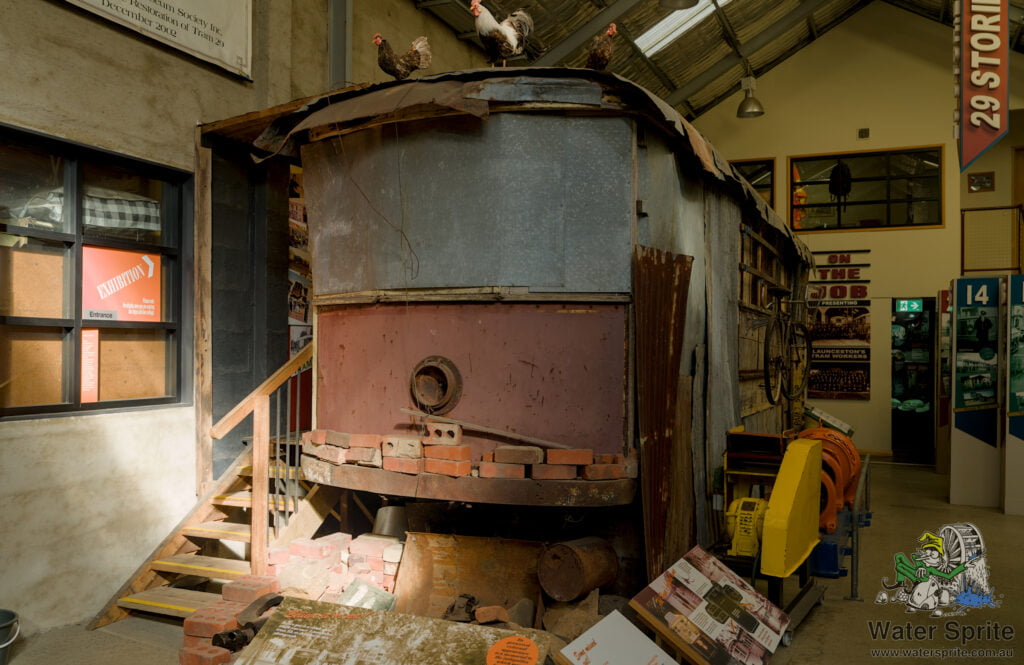
Sony A7Riv with Sony FE 24-70mm F2.8 GM II lens @ 30mm. 1/50s, f/5.0, 100 ISO.
The museum is run entirely by volunteers – including the drivers and conductors managing your tram ride. They were very knowledgeable and very happy to talk about what they had done, and what they have planned for the future. The hard work of restoring and maintaining the trams and exhibits is almost all done by the volunteers.
The Tram Ride
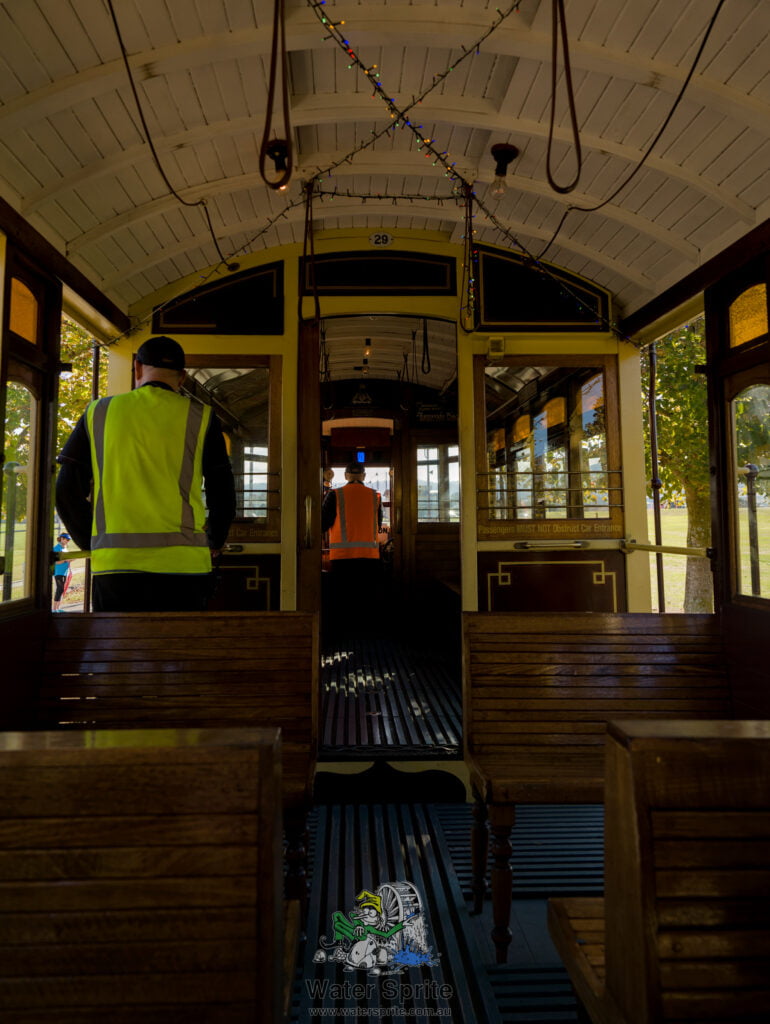
Sony A7Riv with Sony FE 24-70mm F2.8 GM II lens @ 24mm. 1/200s, f/5.0, 100 ISO.
Tram 29 was the last tram to enter service, and the first (and so far only?) one to re-enter service. After the tram sale, it became (with extensive modifications) a coast holiday house. The museum acquired it, rebuilt it back to its 1930’s configuration, located some replacement motors and other essential parts, and restored it to operation. The museum has photos of it in it’s holiday house form before return to Launceston and restoration.
There is a loop circuit around the Inveresk Precinct which the tram takes you on. The main and most obvious bit of line is the track through the middle of the main walkway through the precinct. However, there is another track that runs around behind the University and Museum, to make a loop. The total trip is approximately 1.7km and takes about 15 minutes.
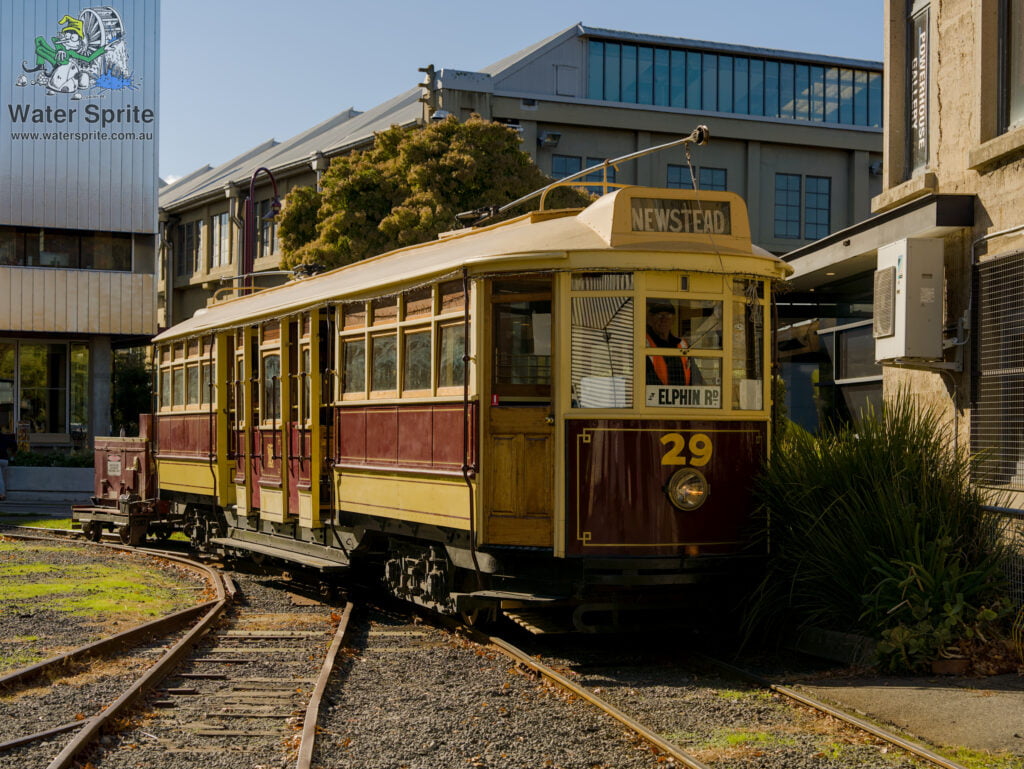
Sony A7Riv with Sony FE 24-70mm F2.8 GM II lens @ 53mm. 1/1000s, f/5.0, 100 ISO.
Council removed the pantographs when the trams stopped running, and according to the museum staff, reinstating the pantograph now would cost a good many millions of dollars. As a volunteer run organisation, they don’t have that sort of money. Tram 29 tows (or pushes, depending on direction of travel) a little trailer with a diesel generator on it to provide the electricity it cannot get from overhead wires anymore.



The Future
I gathered there are a few things being planned or considered for the future.
- I understand the plan is to return Tram 1 to service, so the first and last Launceston trams are both operational. I’m not sure how far away they are from achieving that goal.
- There is a plan to replace the current diesel generator trailer with a battery pack. The museum has solar panels on the roof and can charge the batteries while the tram is not in use. I believe they said this would save them something like $200 per week in diesel.
- Finally, I understand Launceston City Council have suggested the possibility of extending the tram lines across Tamar Street/Invermay Road and down towards Riverside Park. That involves getting the tramlines across the road and through the flood protection walls, however, so I am not sure how serious a suggestion that is.
For further information about the museum, opening times, and so on, please see their webpage.
Queen Victoria Museum
The Queen Victoria Museum and Gallery (or QVMAG as it is known on its advertising) is Launceston’s official museum and gallery. It occupies a portion of the old railway workshop buildings, and has a mix of permanent and rotating displays. It is open most days of the year and entry is free. There is space for a cafe inside, but it was not open on our visit and the only cafe nearby was extremely busy and unable to find a table for us. We ended up eating lunch at a bakery up the road which, incidentally, had a dedicated gluten-free bakehouse. I think actually that worked in our favour.
Railway exhibit
One of the permanent displays is a bit on the railway history of Tasmania. Railways were essential to the early industry of Tasmania, and this exhibit acknowledges that history. It wasn’t particularly large, and actually I was a little disappointed. I would have thought the location of the museum gave them a perfect opportunity to look at the railway history in more detail. It was informative, but only included a tiny snippet of lots of different facets of railway history. I guess the museum is more targeted to quick family visits rather than serious train buffs.
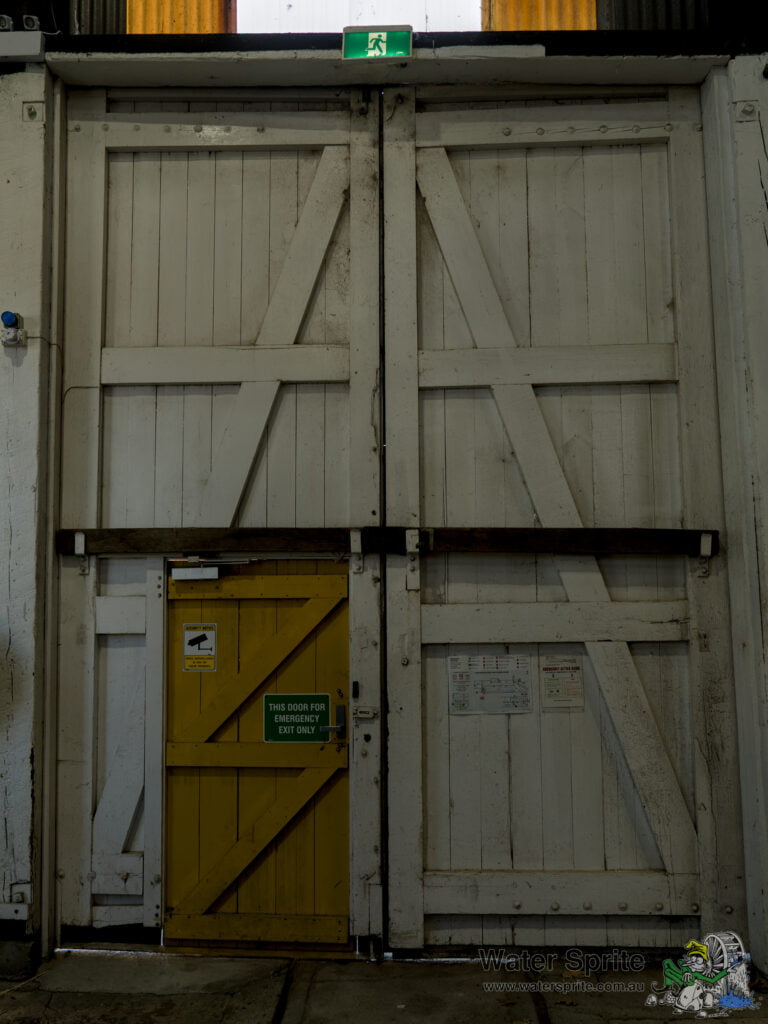
Sony A7Riv with Sony FE 24-70mm F2.8 GM II lens @ 24mm. 1/30s, f/5.0, 125 ISO.
The Signwriter’s Workshop
At the back of the railway exhibition is a smaller exhibit showcasing the work of the railway signwriters, which was worth a look.
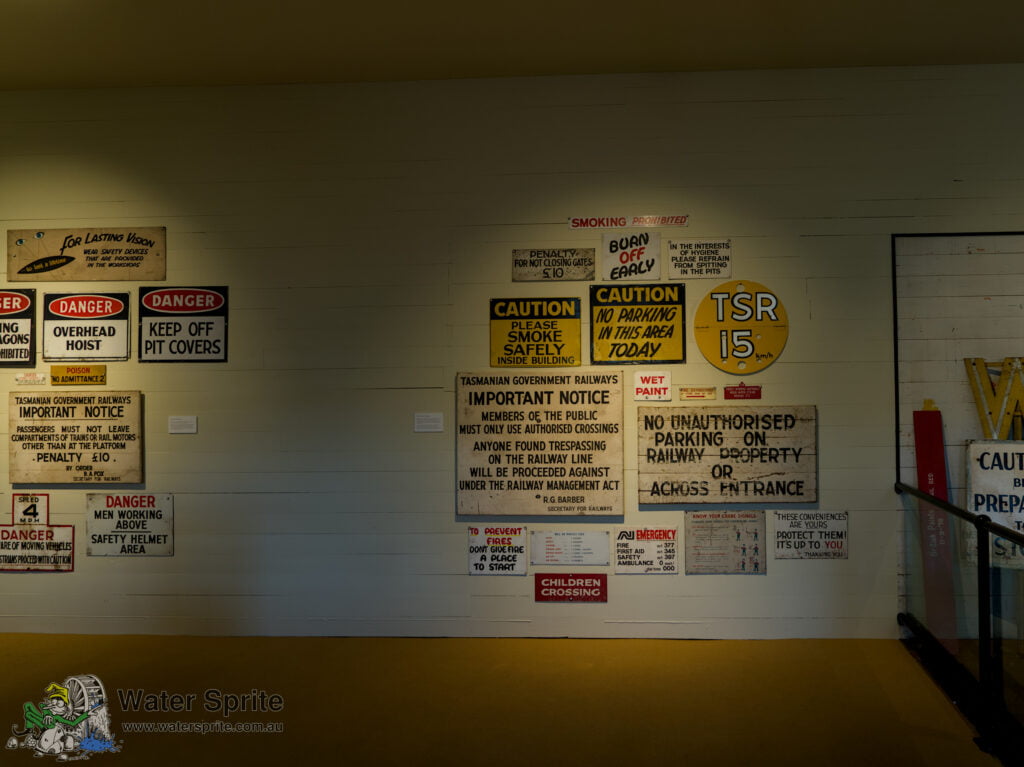
Sony A7Riv with Sony FE 24-70mm F2.8 GM II lens @ 24mm. 1/30s, f/5.0, 160 ISO.
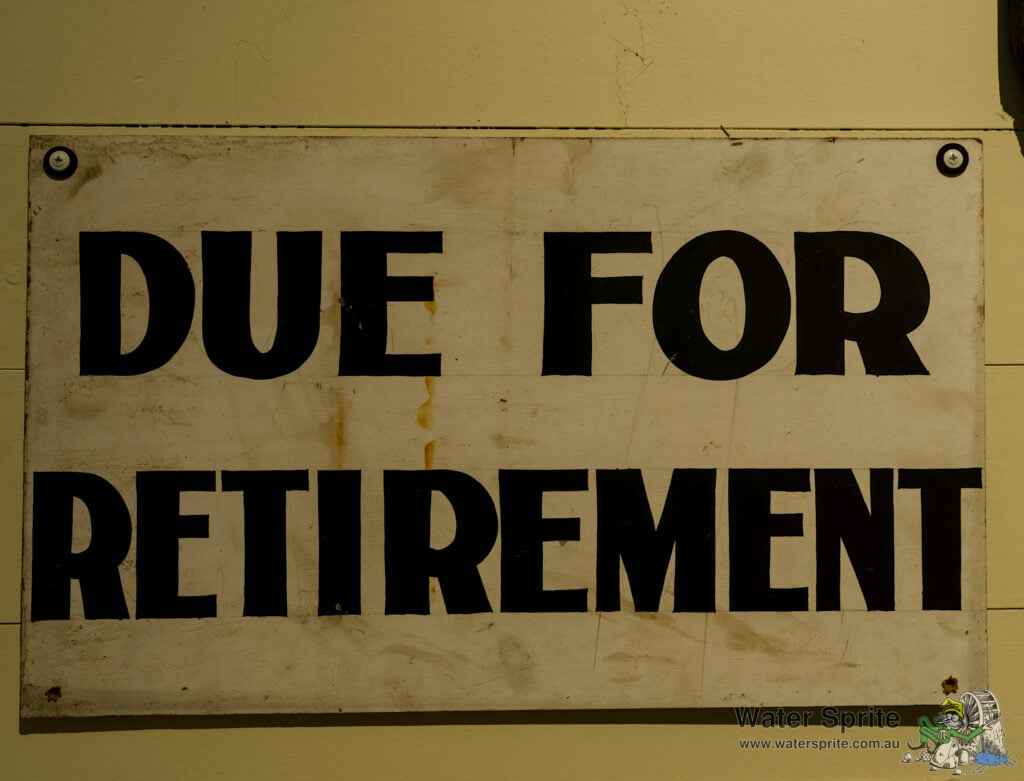
Sony A7Riv with Sony FE 24-70mm F2.8 GM II lens @ 31mm. 1/40s, f/5.0, 125 ISO.
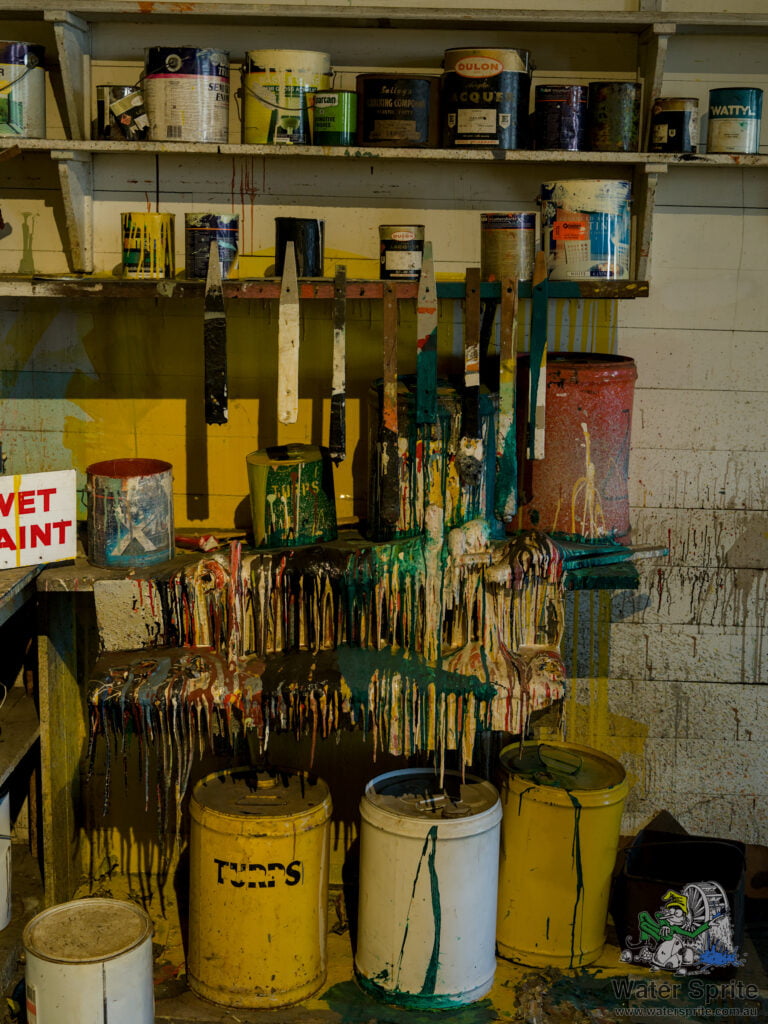
Sony A7Riv with Sony FE 24-70mm F2.8 GM II lens @ 46mm. 1/50s, f/5.0, 640 ISO.
The Blacksmith’s Shop
Many of the old railway workshop buildings are inaccessible, and it is not clear what use (if any) they currently have. Several now have other uses. The former main workshop, for example, is now subdivided between the Museum’s temporary exhibition space and the University. The former Blacksmith’s Shop, however, is open, and it is almost untouched from when it closed in the 1990’s. It is definitely a highlight, if you are interested in such things.
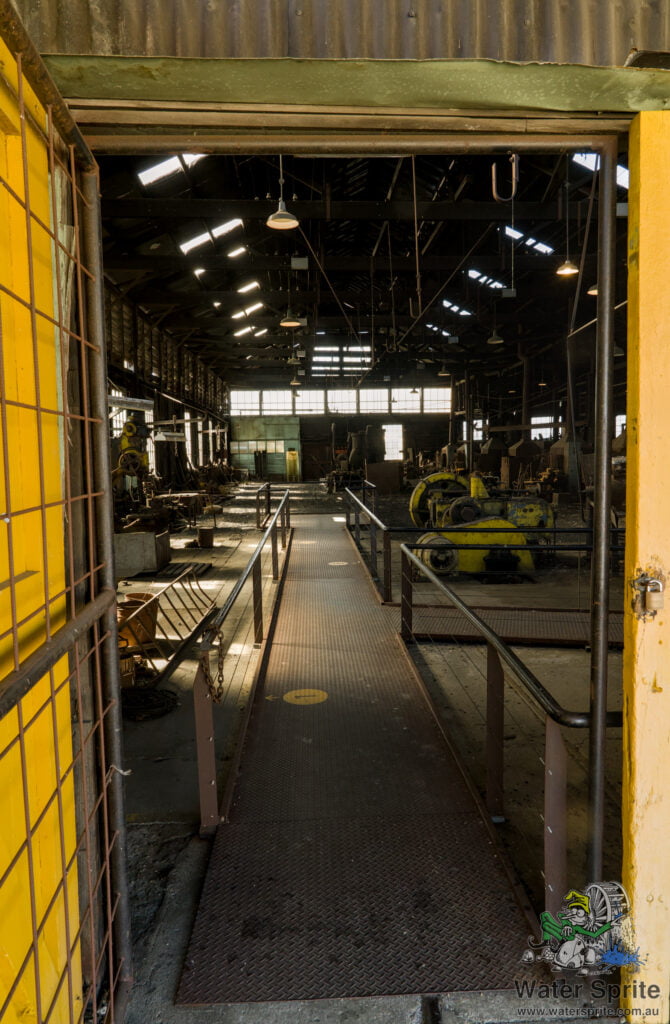
Sony A7Riv with Sony FE 24-70mm F2.8 GM II lens @ 24mm. 1/30s, f/14.0, 1000 ISO.
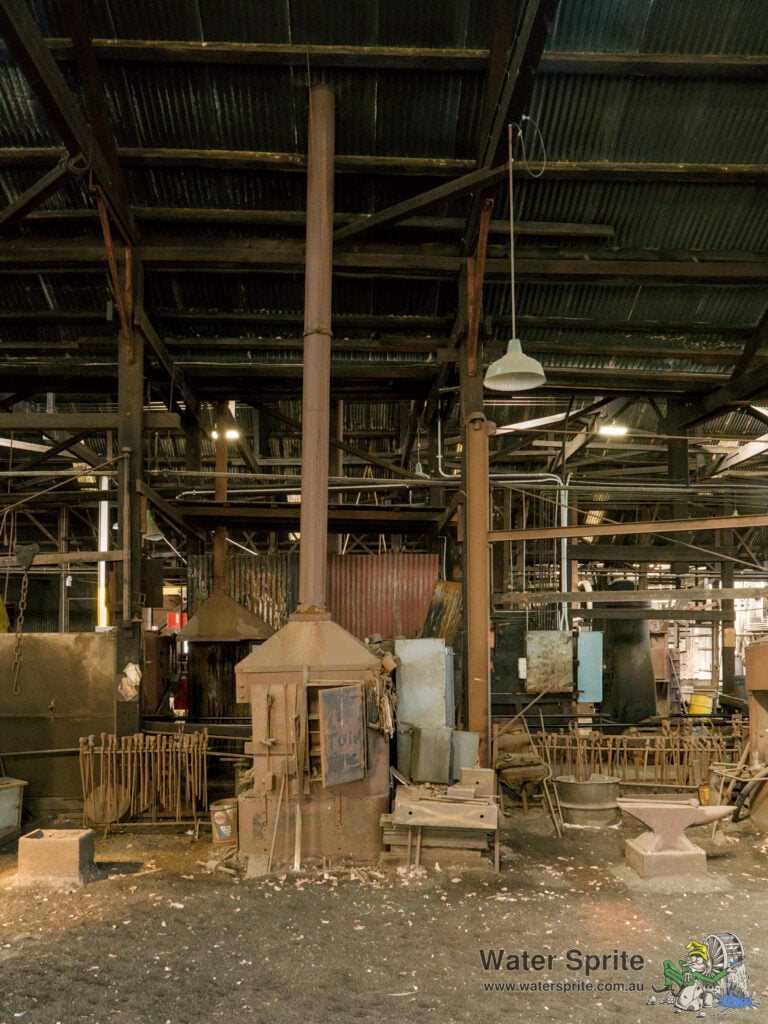
Sony A7Riv with Sony FE 24-70mm F2.8 GM II lens @ 24mm. 1/30s, f/14.0, 8000 ISO.
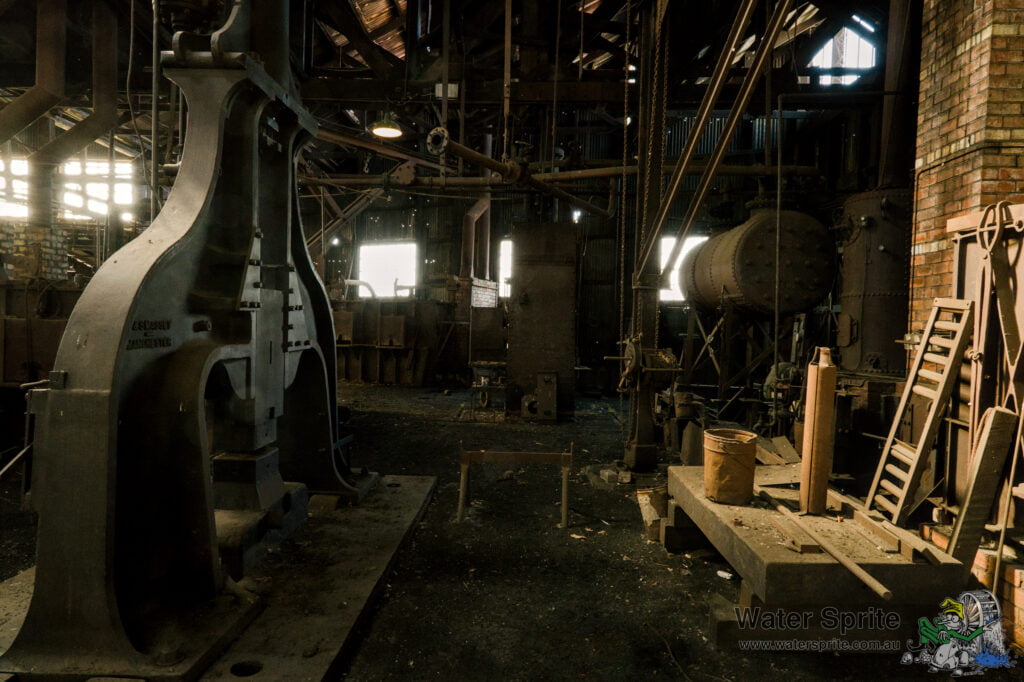
Sony A7Riv with Sony FE 24-70mm F2.8 GM II lens @ 24mm. 1/30s, f/14.0, 12800 ISO.
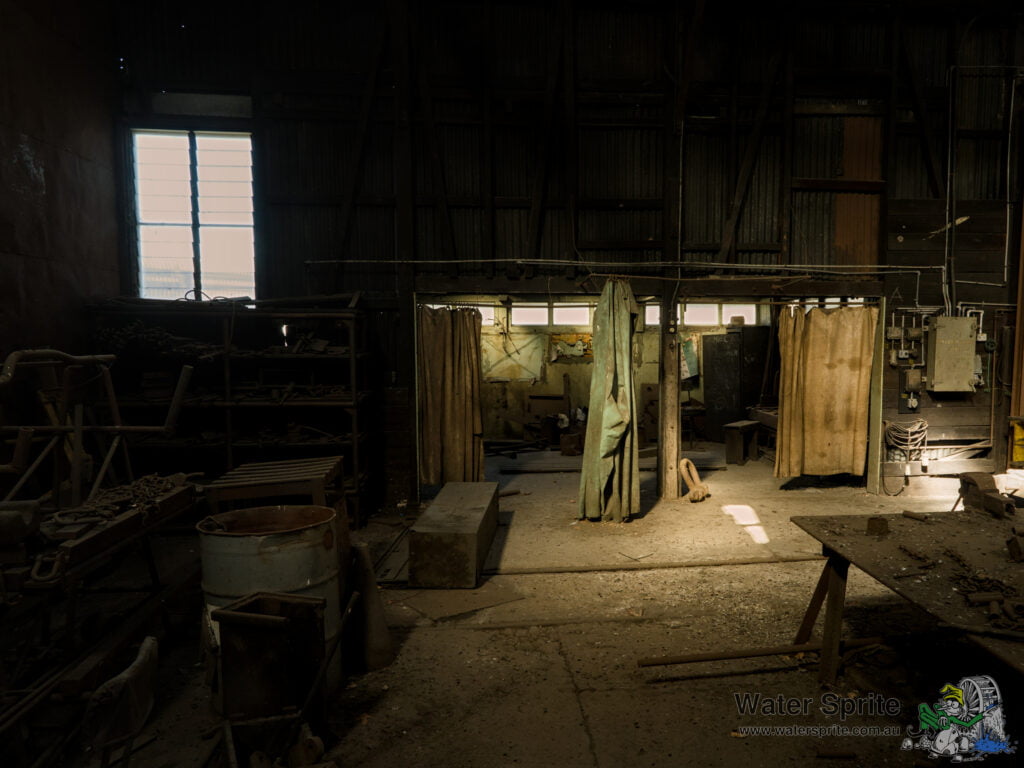
Sony A7Riv with Sony FE 24-70mm F2.8 GM II lens @ 24mm. 1/30s, f/14.0, 2000 ISO.
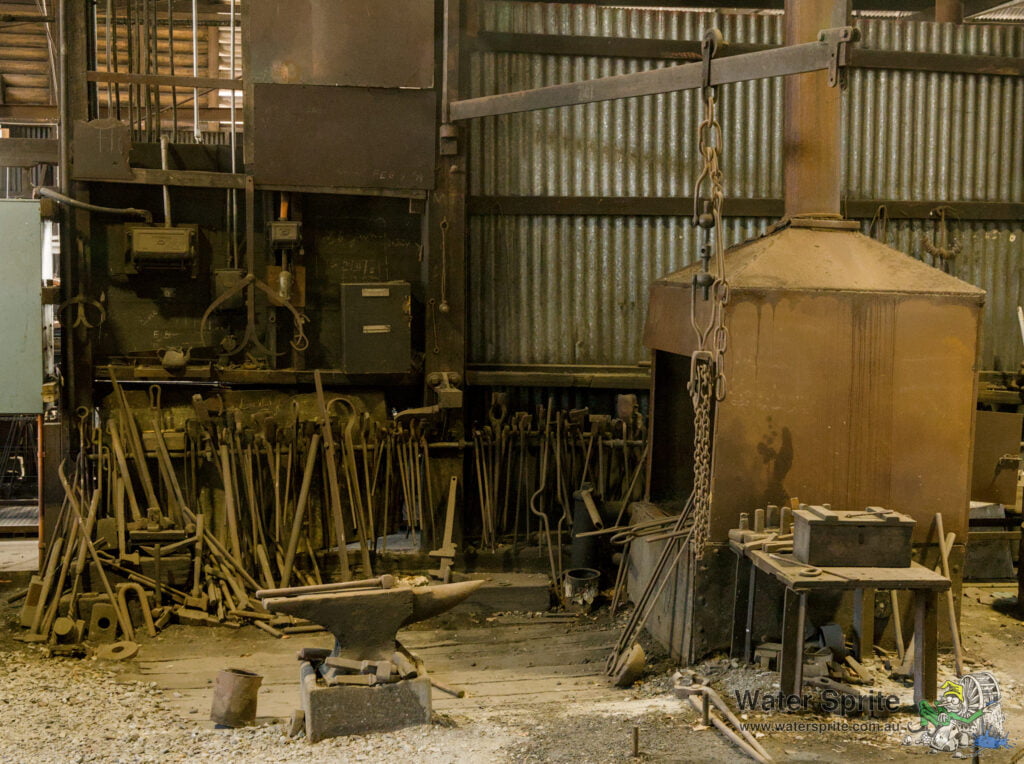
Sony A7Riv with Sony FE 24-70mm F2.8 GM II lens @ 48mm. 1/20s, f/14.0, 12800 ISO.
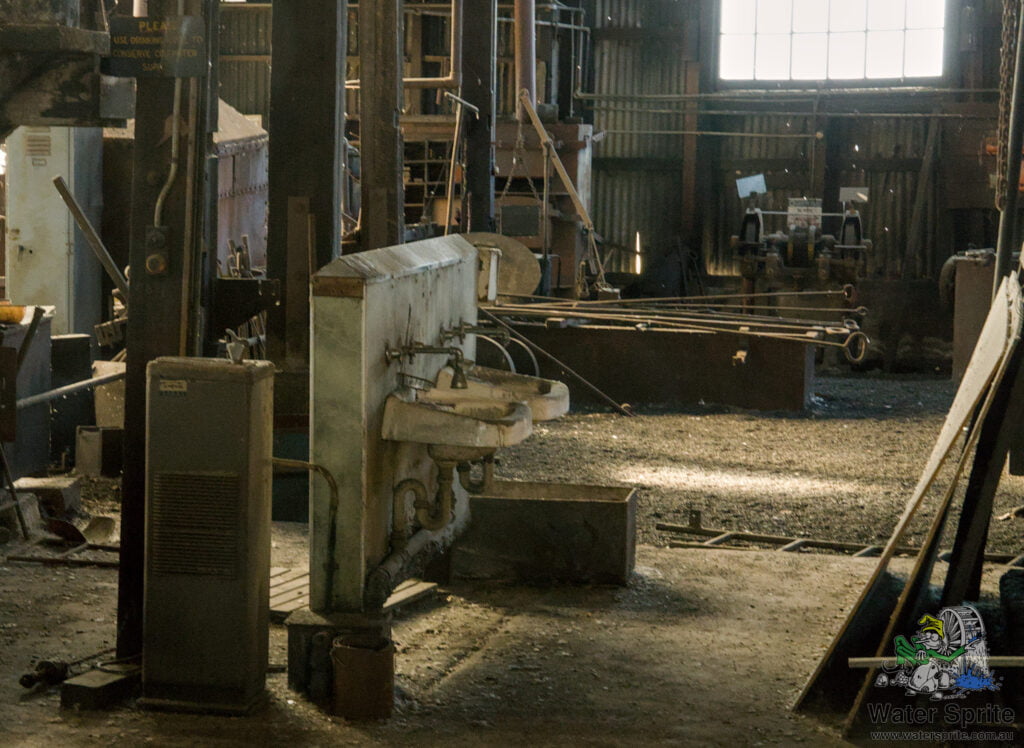
Sony A7Riv with Sony FE 24-70mm F2.8 GM II lens @ 70mm. 1/30s, f/14.0, 12800 ISO.
The Traverser
The Traverser was a motorised mobile piece of track that connected to the access tracks of the various workshops up and down the traverse way. Parts (including entire small engines) would roll out of one workshop, and on to the Traverser. The Traverser would then move up or down the traverse way to the destination track, and the parts would roll in to where they were required. In this way, materials could move around the site without requiring a forklift and trucks to do the job. Although the overhead wires that used to power it are long gone, the Traverser is still there.
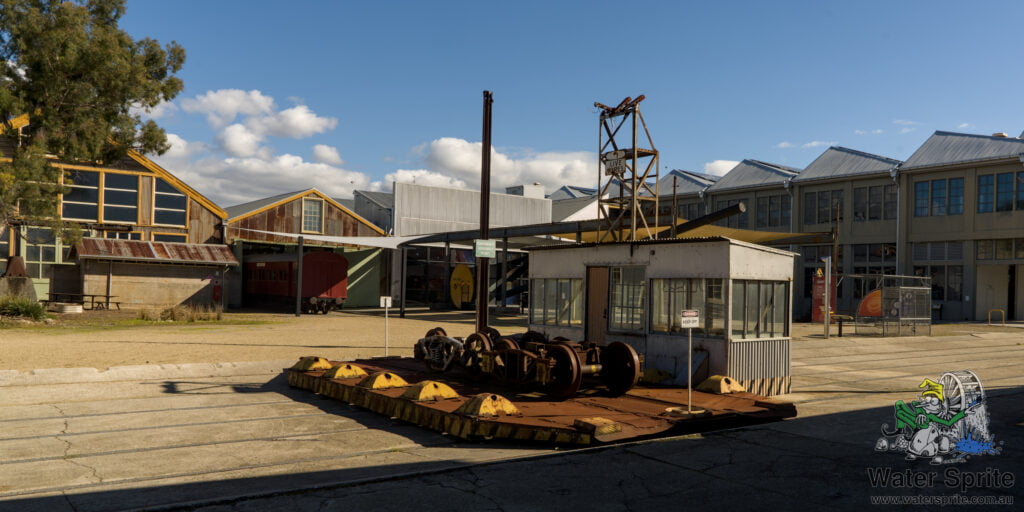
Sony A7Riv with Sony FE 24-70mm F2.8 GM II lens @ 24mm. 1/30s, f/5.0, 125 ISO.
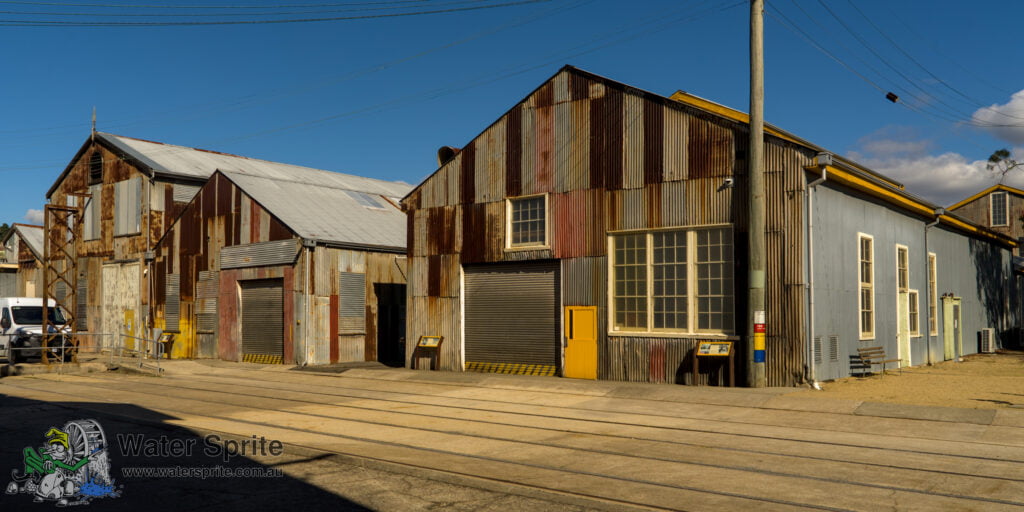
Sony A7Riv with Sony FE 24-70mm F2.8 GM II lens @ 24mm. 1/250s, f/14.0, 100 ISO.
Disclaimer
We attended the establishments and locations mentioned in this post as full fee-paying guests. Our hosts were not advised that we are semi-professional photographers or bloggers before or during our visit. It is our understanding that the tours and information we received were as normally provided to any member of the public.
The views expressed in this post are mine and mine alone, and any errors in it are also all mine. Any recommendations made in this post are unpaid and are based entirely on my experiences during my visit. Your experience may differ, and I cannot be responsible for that.
The Launceston Tramway Museum does not advertise a photography policy, but they were aware I was taking photos. Standard Museum practice is to permit photographs for personal use only. I assume is also the case here. I will not sell these images without the express permission of the Museum (and if they approve, they will get a financial benefit from any sales).
QVMAG conditions of entry permit photography (without a flash) for personal use only. My photos are included here for your information only ,and are not for sale.
Leave a Reply